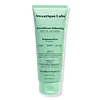What's inside
What's inside
 Key Ingredients
Key Ingredients

 Benefits
Benefits

 Concerns
Concerns

No concerns
 Ingredients Side-by-side
Ingredients Side-by-side

Water
Skin ConditioningCocamidopropyl Hydroxysultaine
CleansingDisodium Cocoyl Glutamate
CleansingSodium Cocoyl Glutamate
CleansingBentonite
AbsorbentStearyl Alcohol
EmollientPropanediol
SolventCichorium Intybus Root Extract
MaskingCamellia Sinensis Leaf Extract
AntimicrobialCamellia Sinensis Seed Extract
HumectantAlpha-Glucan Oligosaccharide
CleansingEthylhexylglycerin
Skin ConditioningXanthan Gum
EmulsifyingCitric Acid
BufferingSodium Hydroxide
BufferingPotassium Sorbate
PreservativePhenoxyethanol
PreservativeWater, Cocamidopropyl Hydroxysultaine, Disodium Cocoyl Glutamate, Sodium Cocoyl Glutamate, Bentonite, Stearyl Alcohol, Propanediol, Cichorium Intybus Root Extract, Camellia Sinensis Leaf Extract, Camellia Sinensis Seed Extract, Alpha-Glucan Oligosaccharide, Ethylhexylglycerin, Xanthan Gum, Citric Acid, Sodium Hydroxide, Potassium Sorbate, Phenoxyethanol
 Reviews
Reviews

Ingredients Explained
These ingredients are found in both products.
Ingredients higher up in an ingredient list are typically present in a larger amount.
Citric Acid is an alpha hydroxy acid (AHA) naturally found in citrus fruits like oranges, lemons, and limes.
Like other AHAs, citric acid can exfoliate skin by breaking down the bonds that hold dead skin cells together. This helps reveal smoother and brighter skin underneath.
However, this exfoliating effect only happens at high concentrations (20%) which can be hard to find in cosmetic products.
Due to this, citric acid is usually included in small amounts as a pH adjuster. This helps keep products slightly more acidic and compatible with skin's natural pH.
In skincare formulas, citric acid can:
While it can provide some skin benefits, research shows lactic acid and glycolic acid are generally more effective and less irritating exfoliants.
Most citric acid used in skincare today is made by fermenting sugars (usually from molasses). This synthetic version is identical to the natural citrus form but easier to stabilize and use in formulations.
Read more about some other popular AHA's here:
Learn more about Citric AcidXanthan gum is used as a stabilizer and thickener within cosmetic products. It helps give products a sticky, thick feeling - preventing them from being too runny.
On the technical side of things, xanthan gum is a polysaccharide - a combination consisting of multiple sugar molecules bonded together.
Xanthan gum is a pretty common and great ingredient. It is a natural, non-toxic, non-irritating ingredient that is also commonly used in food products.
Learn more about Xanthan Gum